Essence] The classic question and answer of sewage treatment, you will not be stumped by customers if you understand it!
- Categories:News
- Author:
- Origin:
- Time of issue:2021-03-29
- Views:0
(Summary description)Why are the two pollution indicators COD and BOD often used in wastewater analysis?There are many organic substances in wastewater, and wastewater containing more than a dozen, dozens, or even hundreds of organic substances can often be encountered. Consuming medicines. So can only one pollution index be used to represent all the organic substances and their quantities in the wastewater?
Essence] The classic question and answer of sewage treatment, you will not be stumped by customers if you understand it!
(Summary description)Why are the two pollution indicators COD and BOD often used in wastewater analysis?There are many organic substances in wastewater, and wastewater containing more than a dozen, dozens, or even hundreds of organic substances can often be encountered. Consuming medicines. So can only one pollution index be used to represent all the organic substances and their quantities in the wastewater?
- Categories:News
- Author:
- Origin:
- Time of issue:2021-03-29
- Views:0
1. Why are the two pollution indicators COD and BOD often used in wastewater analysis?There are many organic substances in wastewater, and wastewater containing more than a dozen, dozens, or even hundreds of organic substances can often be encountered. Consuming medicines. So can only one pollution index be used to represent all the organic substances and their quantities in the wastewater? Environmental scientists have found through research that all organic substances have two things in common: one is that they are at least composed of hydrocarbons; the other is that most organic substances can be chemically oxidized or oxidized by microorganisms, and their carbon and hydrogen are respectively Forms non-toxic and harmless carbon dioxide and water with oxygen. The organic matter in the wastewater consumes oxygen both in the chemical oxidation process and in the biological oxidation process. The more organic matter in the wastewater, the more oxygen is consumed. Therefore, environmental scientists call the amount of oxygen consumed when wastewater is oxidized with chemicals as chemical oxygen demand, or COD; and the amount of oxygen consumed by microbial oxidation of wastewater is called biological oxygen demand, or BOD. Because COD and BOD can comprehensively reflect the amount of all organic substances in wastewater, and the analysis is relatively simple, they are widely used in wastewater analysis and environmental engineering. In fact, COD does not only represent organic substances in water, it can also represent inorganic substances with reducing properties in water, such as sulfides, ferrous ions, sodium sulfite, and even chloride ions. For example, if the ferrous ions in the effluent of the iron carbon pool are not completely removed in the neutralization pool, the COD of the effluent may exceed the standard due to the presence of ferrous ions in the biochemically treated effluent.
2. What is COD (chemical oxygen demand)? Chemical oxygen demand (COD) refers to the amount of oxygen required by the oxidizable substances in wastewater when they are oxidized by chemical oxidants, in mg/L of oxygen. It is currently one of the most commonly used methods for determining the content of organic matter in wastewater. The commonly used oxidants in COD analysis are potassium permanganate (manganese method CODMn) and potassium dichromate (chromium method CODCr), and potassium dichromate method is now commonly used. The wastewater is oxidized to organics under the condition of strong acid heating, boiling and refluxing. When silver sulfate is used as a catalyst, the oxidation rate of most organics can be increased to 85-95%. If the wastewater contains a high concentration of chloride ions, mercury sulfate should be used to shield the chloride ions to reduce interference to the determination of COD.
3. What is BOD5 (Biochemical Oxygen Demand)? Biochemical oxygen demand can also characterize the degree of organic pollution of wastewater. The most commonly used is five-day biochemical oxygen demand, expressed as BOD5, which indicates the amount of oxygen required for biochemical degradation of wastewater in the presence of microorganisms within five days. In the future we will often use the five-day BOD.
4. What is the relationship between COD and BOD5? Some organic substances can be degraded by biological oxidation (such as glucose and ethanol), some organic substances can only be partially degraded by biological oxidation (such as methanol), and some organic substances cannot be degraded by biological oxidation. Biooxidatively degradable and also toxic (eg ginkgol, ginkgolic acid, certain surfactants). Therefore, we can divide the organic matter in water into two parts, namely, the biodegradable organic matter and the non-biodegradable organic matter. It is generally believed that COD can represent basically all organic matter in water. BOD is the biodegradable organic matter in water, so the difference between COD and BOD can represent the organic matter in the biodegradable part of wastewater.
5. What is B/C? What does B/C mean? B/C is an abbreviation for the ratio of BOD5 to COD, which can indicate the biochemical degradation characteristics of wastewater. If CODNB represents the non-biodegradable part of COD, the proportion of organic matter in wastewater that is not biodegradable by microorganisms can be expressed as CODNB/COD.
There is a relationship between BOD5/COD and CODNB/COD as shown in the following table:
CODNB/COD 0.1 0.2 0.3 0.4 0.5 0.6 0.7 0.8
BOD5/COD 0.52 0.46 0.41 0.35 0.29 0.23 0.17 0.12
When BOD5/COD≥0.45, the non-biodegradable organic matter only accounts for less than 20% of the total organic matter, and when BOD5/COD≤0.2, the non-biodegradable organic matter already accounts for more than 60% of the total organic matter. Therefore, the BOD5/COD value is often used as an evaluation index for the biodegradability of organic matter. BOD5/COD 0.45 easily biodegradable
BOD5/COD 0.30 biodegradable
BOD5/COD 0.30 less biodegradable
BOD5/COD 0.20 less biodegradable
B/C has very important and practical significance in environmental engineering.
6. What is pH? pH is actually a way of expressing the acidity and alkalinity in an aqueous solution. Usually we are often used to expressing the pH of the aqueous solution by percentage concentration, such as 1% sulfuric acid solution or 1% alkali solution, but when the pH of the aqueous solution is very small, it is too troublesome to express it by percentage concentration. , which can be expressed as pH. The application range of pH is between 0 and 14. When pH=7, the water is neutral; when pH<7, the water is acidic, and the smaller the pH, the more acidic the water; when pH>7, the water is alkaline, and the pH The larger the value, the more alkaline the water is. All organisms in the world are inseparable from water, but the range of pH value suitable for biological survival is often very narrow, so the State Environmental Protection Agency strictly regulates the pH value of the treated water between 6-9. The detection of pH value in water often uses pH test paper, and it is also measured by instruments, such as pH meter.
7. Why is the concentration unit of milligram per liter (mg/L) often used in wastewater analysis? Generally speaking, the content of organic and inorganic substances in wastewater is very small. If it is expressed by percentage concentration or other concentrations, it is too troublesome and inconvenient. For example, a ton of wastewater is often only a few grams, a few Ten grams, hundreds of grams or even a few kilograms of pollutants, the unit is grams per ton (g/T).
When calculating, please refer to the following table for conversion:
1 mg/L
1000 mg/L 1/1000 mg/L
10000 mg/L
8. What is the pretreatment of wastewater? What are the goals of preprocessing? The treatment before the biochemical treatment is commonly known as pretreatment. Due to the relatively low treatment cost and stable operation of the biochemical method, the general industrial wastewater is treated by the biochemical method. However, the wastewater of the *** company contains some organic substances that are inhibiting and toxic to microorganisms. Therefore, the wastewater must be pretreated before entering the biochemical tank. The purpose is to remove the substances that are inhibiting and toxic to microorganisms in the wastewater. Cut or remove as much as possible to ensure that the microorganisms in the biochemical pool can function properly. There are two purposes of pretreatment: one is to reduce and remove as much as possible the substances in the wastewater that are harmful to microorganisms and have inhibitory effects or convert them into substances that are harmless or beneficial to microorganisms, so as to ensure the microorganisms in the biochemical pool. It can operate normally; the second is to reduce the COD load during the pretreatment process to reduce the operating burden of the biochemical pool. ***The company's pretreatment process is iron-carbon micro-electrolysis and Fe2+/Fe3+ reduction and oxidation method. The formation of countless tiny iron-carbon primary batteries is conducive to the redox reaction, which can destroy and remove toxic and harmful substances in wastewater. In the process of neutralization and precipitation, the active flocs formed by ferrous iron and ferric iron in alkaline conditions can absorb organic substances in wastewater to reduce COD load and ensure the normal operation of the subsequent biochemical treatment system.
9. What is the purpose of the waste water collection tank? The function of the wastewater sump is to collect, store and balance the quality and quantity of wastewater. The production wastewater of each workshop is generally unbalanced in the amount and quality of wastewater discharged. There is wastewater during production, and there is no wastewater when it is not in production. Even within a day or between shifts, there may be a large amount of wastewater. Changes, especially in the wastewater of the fine chemical industry, if the turbid wastewater is not divided, the water quality and quantity of the process concentrated wastewater and lightly polluted wastewater will change greatly, which is very unfavorable to the normal operation and treatment effect of wastewater treatment facilities and equipment. , even harmful. Therefore, before the wastewater enters the main sewage treatment system, a wastewater sump with a certain volume must be set up to store the wastewater and make it homogeneous to ensure the normal operation of the wastewater treatment equipment and facilities.
10. Why are the colloidal particles in the wastewater not easy to settle naturally? Many suspended impurities, large particles, and easily settled suspended solids with a specific gravity greater than 1 in the wastewater can be removed by natural sedimentation, centrifugation and other methods. However, it is difficult for suspended particles whose specific gravity is less than 1, which are tiny or even invisible to the naked eye to settle naturally. For example, colloidal particles are particles of 10-4-10-6mm size, which are very stable in water, and their settling speed is extremely slow. It takes 200 years to till the settlement of 1m. There are two reasons for the slow settling. (1) Generally speaking, colloidal particles are negatively charged. Due to the same-sex repulsion, the contact between colloidal particles is prevented, and they cannot be bonded to each other and suspended in water. (2) There is also a layer of molecules on the surface of colloidal particles tightly surrounded by molecules. This layer of hydration also hinders and isolates the contact between colloidal particles and cannot be bonded to each other and suspended in water.
11. How to precipitate the colloidal particles? To precipitate the colloidal particles, it is necessary to promote the colloidal particles to contact each other to make them become large particles, that is, to agglomerate so that their specific gravity is greater than 1 to precipitate. There are many methods used, and the commonly used technologies in engineering are: coagulation method, flocculation method and coagulation method.
12. What is cohesion? Add a coagulation agent with positive ions to the wastewater, and a large number of positive ions exist between the colloidal particles to eliminate the electrostatic repulsion between the colloidal particles, so as to make the particles coalesce. This method by adding positive ion electrolyte, The process of coalescence of colloidal particles with each other is called agglomeration. Commonly used coagulants are aluminum sulfate, ferrous sulfate, alum, ferric chloride, etc.
13. What is flocculation? Flocculation is the addition of polymer coagulants to wastewater. After the polymer coagulants are dissolved, high-molecular polymers will be formed. The structure of this polymer is a linear structure. One end of the line pulls a tiny particle, and the other end pulls another tiny particle, which acts as a bond and bridge between the two particles far apart, making the particles Gradually become larger, and finally form flocs of large particles (commonly known as alum), which accelerates the sedimentation of particles. Commonly used flocculants are polyacrylamide (PAM), polyiron (PE) and so on.
14. Why use polyiron for flocculation adsorption pretreatment for wastewater? The iron hydroxide flocs formed by polyiron during the coagulation process have a good ability to adsorb organic substances in wastewater. The experimental data show that after the wastewater is flocculated and adsorbed with polyiron, about 10%-20% of the COD in the wastewater can be removed. This can greatly reduce the operating burden of the biochemical tank, and is conducive to the discharge of wastewater that meets the standards. In addition, coagulation pretreatment with polyiron can remove trace substances that are toxic and inhibitive to microorganisms in wastewater, so as to ensure the normal operation of microorganisms in the biochemical pool. Among many coagulants, the price of polyiron is relatively cheap (25-300 yuan / ton), so the treatment cost is relatively low, and it is more suitable for the pretreatment of process wastewater. Polyiron is an acidic substance and is highly corrosive, so the processing equipment should be treated with anti-corrosion.
15. What is coagulation? A process in which coagulation and flocculation are used together is a coagulation process. Coagulation is often used in experiments or engineering. For example, ferrous sulfate and other agents are first added to the water to eliminate the electrostatic repulsion between colloidal particles, and then polyacrylamide (PAM) is added to make the particles gradually become larger and form The alum flowers visible to the naked eye finally produce sedimentation.
16. What is adsorption? Porous solids (such as activated carbon) or flocs (such as polyiron) are used to adsorb toxic and harmful substances in wastewater on the surface or micropores of solids or flocs to achieve the purpose of purifying water. This treatment method is called as adsorption treatment. The object of adsorption can be either insoluble solid substances or soluble substances. The adsorption treatment has high efficiency and good effluent quality, so it is often used as advanced wastewater treatment. Adsorption treatment can also be introduced into the biochemical treatment unit to improve the efficiency of biochemical treatment (for example, the PACT method is one of them).
17. What is the iron-carbon treatment method? Iron-carbon treatment method, also known as iron-carbon micro-electrolysis method or iron-carbon internal electrolysis method, is an application form of metal iron treatment wastewater technology. a unique effect. The treatment mechanism of the iron-carbon method is not yet fully understood, but one of the more accepted explanations is that under acidic conditions, countless microcurrent reaction pools are formed between iron and carbon, and organic matter is reduced and oxidized under the action of microcurrent. The iron-carbon effluent is neutralized with lime or lime milk, and the Fe(OH)2 colloidal flocs generated have strong flocculation and adsorption capacity for organic matter. Therefore, the iron-carbon method is a comprehensive application of the reducing properties of iron, the electrochemical properties of iron-carbon and the flocculation and adsorption of iron ions. It is the combined effect of these three properties that the iron-carbon method has a good treatment effect. The disadvantages of the iron-carbon method are: (1) Iron filings tend to form agglomerates after being immersed in an acidic medium for a long time, causing blockage, forming channel flow, making the operation difficult and reducing the treatment effect; (2) Iron leaching under acidic conditions The amount of iron is large, and the amount of sludge produced after alkali neutralization is large.
18. Why should the effluent of iron and carbon be neutralized with lime powder? After the wastewater is adjusted to pH 2 with sulfuric acid and treated with iron and carbon, the sulfuric acid becomes ferrous sulfate, and the pH of the wastewater rises from 2 to 5-6. Then why should the iron and carbon effluent be neutralized with lime powder? Or is it possible to add less lime powder during neutralization? The effluent of iron carbon contains a large amount of ferrous sulfate. If it is not removed, it will affect the growth and reproduction of microorganisms in the subsequent biochemical pool. Therefore, we must use lime to adjust the pH value of the wastewater from 5-6 to above 9. The water-soluble ferrous sulfate is converted into insoluble ferrous hydroxide and calcium sulfate, and then they are precipitated by the method of coagulation and sedimentation to ensure that the wastewater entering the biochemical tank does not contain ferrous sulfate. Is it possible to add less lime powder during neutralization? We can do a comparison experiment in the laboratory. Take the same amount of iron charcoal influent (pH around 2) and iron charcoal effluent (pH around 5-6) and place them in two beakers, respectively, and then add lime powder by metering for neutralization and coagulation. When the pH value of the wastewater is adjusted to 9, we can find that the amount of lime powder added to the two beakers is the same. This is because iron is not a neutralizing agent, the ferrous sulfate converted by sulfuric acid is still an acidic substance, and the lime powder consumed when ferrous sulfate is converted into ferrous hydroxide and calcium sulfate during the neutralization process is not less. of. Therefore, it is not necessary to add less lime powder during the neutralization treatment of iron and carbon effluent.
19. How to estimate the amount of chemical sludge produced? Sludge produced by chemical reaction (such as neutralization) and physicochemical treatment (such as chemical coagulation) is customarily called chemical sludge. The sludge formed by the neutralization and coagulation of the iron-carbon effluent is mainly composed of ferrous hydroxide and calcium sulfate. The amount of sludge produced can be calculated by the amount of sulfuric acid and lime powder added. Engineering can also use experience to estimate. Generally speaking, if the pH of the iron and carbon influent is about 2, the amount of chemical sludge (water content 80%) produced per ton of wastewater after neutralization and coagulation is about 50 kg.
20. What is the biochemical treatment of wastewater? Biochemical treatment of wastewater is one of the most important processes in wastewater treatment systems, referred to as biochemical treatment. Biochemical treatment is to use the life activity process of microorganisms to effectively remove the soluble organic matter and some insoluble organic matter in the wastewater, so that the water can be purified. In fact, we are not very unfamiliar with biochemical treatment. There is a food chain in natural water bodies, that is, big fish eat small fish, small fish eat shrimp, shrimp eat small insects, small insects eat microorganisms, and microorganisms eat sewage. In this food chain, nature is going to mess up. In natural rivers, there are a large number of microorganisms that live on organic matter. They oxidize or reduce the organic matter (such as industrial wastewater, pesticides, fertilizers, feces, etc.) that people discharge into the river day and night, and finally convert them into It is an inorganic substance. Without the existence of microorganisms, the rivers around us will become smelly rivers in as little as a few months or as long as one or two years. It is just because the microorganisms are too small and scattered that people cannot see it with the naked eye. . The biochemical treatment of wastewater is an intensification of this process under artificial conditions. People gather all the countless microorganisms in a pool to create an environment that is very suitable for the reproduction and growth of microorganisms (such as temperature, pH value, oxygen, nitrogen and phosphorus and other nutrients), so that the microorganisms proliferate in large quantities to improve their decomposition of organic matter. speed and efficiency. Then, the wastewater is pumped into the pool, so that the organic substances in the wastewater can be oxidized and degraded during the life activities of microorganisms, so that the wastewater can be purified and treated. Compared with other treatment methods, the biochemical method has the characteristics of low e
nergy consumption, no drug addition, good treatment effect and low treatment cost.
21. In what way do microorganisms decompose and remove organic pollutants in wastewater? Due to the presence of carbohydrates, fats, proteins and other organic substances in wastewater, these inanimate organic substances are the food for microorganisms. Some of them are degraded and synthesized into cellular substances (combined metabolites), and the other part is degraded and oxidized into water, carbon dioxide, etc. (catabolites). ), during which organic pollutants in wastewater are degraded and removed by microorganisms.
22. What factors are related to microorganisms? In addition to nutrients, microorganisms also need appropriate environmental factors, such as temperature, pH, dissolved oxygen, osmotic pressure, etc. to survive. If the environmental conditions are not normal, it will affect the life activities of microorganisms, and even mutate or die.
23. What temperature range is the most suitable for microorganisms to grow and reproduce? In the biological treatment of wastewater, the most suitable temperature range for microorganisms is generally 16-30 °C, and the maximum temperature is 37-43 °C. When the temperature is lower than 10 °C, the microorganisms will no longer grow. In a suitable temperature range, for every 10°C increase in temperature, the metabolic rate of microorganisms will increase accordingly, and the COD removal rate will also increase by about 10%; on the contrary, for every 10°C decrease in temperature, the COD removal rate will decrease by 10%, so In winter, the biochemical removal rate of COD will be significantly lower than other seasons.
24. What is the optimum pH range for microorganisms? The life activities and material metabolism of microorganisms are closely related to pH value. Most microorganisms are adapted to pH in the range of 4.5-9, and the most suitable pH is in the range of 6.5-7.5. When the pH is lower than 6.5, the fungi begin to compete with the bacteria. When the pH reaches 4.5, the fungi will have a complete advantage in the biochemical tank, which will seriously affect the sedimentation results of the sludge; when the pH exceeds 9, the metabolic rate of the microorganisms will be reduced. hindered. Different microorganisms have different requirements for the adaptation range of pH value. In aerobic biological treatment, the pH can vary between 6.5-8.5; in anaerobic biological treatment, the pH requirements of microorganisms are stricter, and the pH should be between 6.7-7.4.
25. What is dissolved oxygen? How is dissolved oxygen related to microorganisms? The oxygen dissolved in water is called dissolved oxygen. The organisms and aerobic microorganisms in the water body, the oxygen they rely on for their survival is dissolved oxygen. Different microorganisms have different requirements for dissolved oxygen. Aerobic microorganisms need to supply sufficient dissolved oxygen. Generally speaking, dissolved oxygen should be maintained at 3 mg/L, and the minimum should not be lower than 2 mg/L; facultative microorganisms require dissolved oxygen in the range of 0.2-2.0 mg/L. However, anaerobic microorganisms require the dissolved oxygen to be in the range of 0.2 mg/L or less.
26. Why does high-concentration saline wastewater have a particularly great impact on microorganisms?Let's first describe an osmotic pressure experiment: a semi-permeable membrane is used to separate two salt solutions of different concentrations. The water molecules of the solution will also enter the low-concentration salt solution through the semi-permeable membrane, but the number is small, so the liquid level on one side of the high-concentration salt solution will rise, and when the height difference between the liquid levels on both sides is sufficient to prevent the water from re-flowing. The osmotic pressure will stop when the flow pressure is high, and the pressure generated by the height difference between the liquid levels on both sides is the osmotic pressure. In general, the higher the salt concentration, the higher the osmotic pressure. The situation of microorganisms in saline solution is similar to that of osmotic pressure experiments. The unit structure of microorganisms is a cell, and the cell wall is equivalent to a semi-permeable membrane. When the chloride ion concentration is less than or equal to 2000 mg/L, the osmotic pressure that the cell wall can withstand is 0.5-1.0 atmospheres, even if the cell wall and the cytoplasmic membrane are added. Elastic, the osmotic pressure that the cell wall can withstand will not be greater than 5-6 atmospheres. However, when the chloride ion concentration in the aqueous solution is above 5000mg/L, the osmotic pressure will increase to about 10-30 atmospheres. Under such a large osmotic pressure, a large number of water molecules in the microorganisms will penetrate into the in vitro solution, causing cells Plasma separation occurs due to water loss, and in severe cases, the microorganisms die. In daily life, people use salt (sodium chloride) to pickle vegetables and fish, and sterilize and preserve food. This principle is used. Engineering experience data show that: when the chloride ion concentration in wastewater is greater than 2000mg/L, the activity of microorganisms will be inhibited, and the COD removal rate will be significantly reduced; when the chloride ion concentration in wastewater is greater than 8000mg/L, it will cause sludge volume Swelling, a lot of foam on the water surface, and microorganisms will die one after another. However, after long-term domestication, microorganisms will gradually adapt to grow and reproduce in high concentrations of salt water. At present, some people have domesticated microorganisms that can adapt to chloride or sulfate concentrations above 10,000 mg/L. However, the principle of osmotic pressure tells us that the microorganisms that have adapted to grow and reproduce in high-concentration salt water have a very high salt concentration in the cell fluid. Water molecules will infiltrate a large number of microorganisms, causing microbial cells to swell, and in severe cases, rupture and die. Therefore, after long-term domestication and the microorganisms that can gradually adapt to grow and reproduce in high-concentration salt water, the salt concentration in the biochemical influent should always be kept at a fairly high level, and it should not be high or low, otherwise the microorganisms will die in large numbers.
27. What is aerobic biochemical treatment? What is facultative oxygen biochemical treatment? What is the difference between the two? Biochemical treatment can be divided into two categories: aerobic biochemical treatment and anoxic biochemical treatment according to the different requirements of microbial growth on oxygen environment. Anoxic biochemical treatment can be further divided into facultative biochemical treatment and anaerobic biochemical treatment. In the process of aerobic biochemical treatment, aerobic microorganisms must grow and reproduce in the presence of a large amount of oxygen, and reduce the organic matter in wastewater; while in the process of facultative biochemical treatment, facultative microorganisms only need a small amount of oxygen to grow and reproduce. The organic substances in the wastewater are degraded. If there is too much oxygen in the water, the facultative microorganisms will not grow well, which will affect the treatment efficiency of organic substances. Facultative microorganisms can adapt to wastewater with high COD concentration, the influent COD concentration can be increased to more than 2000mg/L, and the COD removal rate is generally 50-80%; while aerobic microorganisms can only adapt to wastewater with low COD concentration. The COD concentration of water is generally controlled below 1000-1500mg/L, the COD removal rate is generally 50-80%, and the time for facultative biochemical treatment and aerobic biochemical treatment is not too long, generally 12-24 hours. People take advantage of the differences and similarities between facultative biochemical and aerobic biochemical treatment to combine facultative biochemical treatment and aerobic biochemical treatment, so that wastewater with higher COD concentration is first subjected to facultative biochemical treatment, and then the facultative biochemical treatment is carried out. The treated effluent is used as the influent of the aerobic tank. Such a combined treatment can reduce the volume of the biochemical tank, which not only saves environmental protection investment but also reduces daily operating costs. The principle and function of anaerobic biochemical treatment and facultative biochemical treatment are the same. The difference between anaerobic biochemical treatment and facultative biochemical treatment is that anaerobic microorganisms do not need any oxygen in the process of reproduction and growth and their degradation of organic matter, and anaerobic microorganisms can adapt to wastewater with higher COD concentration (4000- 10000mg/L). The disadvantage of anaerobic biochemical treatment is that the biochemical treatment time is very long, and the residence time of wastewater in the anaerobic biochemical tank generally takes more than 40 hours.
28. What are the applications of biological treatment in wastewater treatment engineering? There are two types of biological treatment technologies that are most widely used in wastewater treatment projects: one is called activated sludge method, and the other is called biofilm method. The activated sludge process is a form of aerobic wastewater treatment performed by the biochemical metabolism of suspended biological groups. In the process of growth and reproduction, microorganisms can form bacterial micelles with a large surface area, which can flocculate and absorb a large amount of suspended colloidal or dissolved pollutants in wastewater, and absorb these substances into the cell body. Complete oxidation of these substances releases energy, CO2 and H2O. The sludge concentration of activated sludge method is generally 4g/L. In the biofilm method, microorganisms adhere to the surface of the filler to form a colloid-linked biofilm. Biofilms generally have a fluffy flocculent structure with many micropores and a large surface area, and have a strong adsorption effect, which is conducive to the further decomposition and utilization of these adsorbed organic substances by microorganisms. During the treatment process, the flow of water and the agitation of the air make the surface of the biofilm constantly contact with the water, the organic pollutants and dissolved oxygen in the wastewater are adsorbed by the biofilm, and the microorganisms on the biofilm continuously decompose these organic substances. At the same time as the organic matter, the biofilm itself is also constantly metabolized, and the aging biofilm falls off and is taken out of the biological treatment facility by the treated effluent and separated from the water in the sedimentation tank. The sludge concentration of biofilm method is generally 6-8g/L. In order to increase the sludge concentration and thus improve the treatment efficiency, the activated sludge method can be combined with the biofilm method, that is, the filler is added to the activated sludge tank. Known as a compound bioreactor, it has a very high sludge concentration, generally around 14g/L.
29. What are the similarities and differences between biofilm method and activated sludge method? The biofilm method and the activated sludge method are different reactor forms of biochemical treatment. The main difference in appearance is that the former microorganism does not need a filler carrier, and the biological sludge is suspended, while the latter microorganism is fixed on the filler. , however, their mechanisms for treating wastewater and purifying water are the same. In addition, the two biological sludges are aerobic activated sludge, and the composition of the sludge also has a certain similarity. In addition, because the microorganisms in the biofilm method are fixed on the filler, they can form a relatively stable ecosystem, and their living energy and energy consumption are not as large as those in the activated sludge method. The sludge is less than the activated sludge method. The contact oxidation tank of Shanghai Xinyi Bailuda Pharmaceutical Co., Ltd. adopts the biofilm method, while the SBR biochemical tank adopts the activated sludge method.
30. What is activated sludge? From the perspective of microorganisms, the sludge in the biochemical tank is a biological group composed of various biologically active microorganisms. If you observe the sludge particles under a microscope, you can see that there are a variety of microorganisms in it - bacteria, molds, protozoa and metazoans (such as rotifers, insect larvae and worms, etc.), which constitute a food chain , bacteria and molds can break down complex organic compounds to obtain the energy necessary for their own activities and to construct themselves. Protozoa feed on bacteria and molds, which are then consumed by metazoans, which can also live directly on bacteria. This flocculent sludge filled with microorganisms and capable of degrading organic matter is called activated sludge. In addition to being composed of microorganisms, activated sludge also contains some inorganic substances and organic substances adsorbed on activated sludge that cannot be biodegraded (ie, metabolic residues of microorganisms). The moisture content of activated sludge is generally 98-99%. Like alum, activated sludge has a large surface area, so it has a strong adsorption force and the ability to oxidize and decompose organic matter.
31. How to evaluate activated sludge in activated sludge process and biofilm process? The identification and evaluation of the activated sludge growth of the activated sludge method and the biofilm method are different. In the biofilm method, the evaluation of the growth of activated sludge mainly uses a microscope to directly observe the biological phase. In the activated sludge method, in addition to directly observing the biological phase with a microscope, the evaluation indicators for evaluating the growth of activated sludge are: mixed liquid suspended solids (MLSS), mixed liquid volatile suspended solids (MLVSS), sewage Sludge Settlement Ratio (SV), Sludge Settlement Index (SVI), etc.
32. When observing the biological phase with a microscope, which type of microorganism directly indicates that the biochemical treatment effect is good? The appearance of micro metazoans (such as rotifers, nematodes, etc.) indicates that the microbial community is growing well, and the ecosystem of activated sludge is relatively stable, and the biochemical treatment effect is the best at this time, which is like a river where big fish are often caught. , the same situation as small fish and shrimp grow well. 38. What is Mixed Liquid Suspended Solids (MLSS)? Mixed liquid suspended solids (MLSS), also known as sludge concentration, refers to the weight of dry sludge contained in a unit volume of biochemical tank mixed liquid, in milligrams per liter, to characterize the concentration of activated sludge. It includes two parts, organic matter and inorganic matter. Generally speaking, it is appropriate to control the MLSS value in the SBR biochemical tank to be around 2000-4000 mg/L.
33. What is Mixed Liquid Volatile Suspended Solids (MLVSS)? Mixed liquid volatile suspended solids (MLVSS) refers to the weight of volatile substances in the dry sludge contained in the mixed liquid of the biochemical tank per unit volume, and the unit is also mg/L. Since it does not include the inorganic substances in the activated sludge, it can More accurately represents the number of microorganisms in activated sludge.
34. Sludge Settlement Ratio (SV)? Sludge Settlement Ratio (SV) refers to the volume ratio (%) of the sedimented sludge and the mixed liquid after the mixed liquid in the aeration tank is in a 100 ml graduated cylinder and settled for 30 minutes, so it is sometimes expressed as SV30. Generally speaking, the SV in the biochemical pool is between 20-40%. Sludge settling ratio is relatively simple to measure, and is one of the important indicators for evaluating activated sludge. It is often used to control the discharge of excess sludge and abnormal phenomena such as sludge bulking in a timely manner. Obviously, SV is also related to sludge concentration.
35. Sludge Index (SVI)? Sludge Index (SVI) is the full name of Sludge Volume Index, the number of milliliters occupied by 1 gram of dry sludge in wet state. The calculation formula is as follows: SVI=SV*10/MLSS SVI excludes the influence of sludge concentration factor , which can better reflect the cohesion and settling properties of activated sludge. It is generally believed that when 60<SVI<100, the sludge settling performance is good.
When 100<SVI<200, the sludge settling performance is generally
when 200<SVI<300. The tendency of sludge to expand
when SVI>300, the sludge has expanded
36. What does dissolved oxygen (DO) represent? Dissolved oxygen (DO) represents the dissolved amount of oxygen in water, and the unit is expressed in mg/L. Different biochemical treatment methods have different requirements for dissolved oxygen. In the facultative biochemical process, the dissolved oxygen in the water is generally between 0.2-2.0 mg/L, while in the SBR aerobic biochemical process, the dissolved oxygen in the water is generally Between 2.0-8.0mg/L. Therefore, in the operation of the facultative aerobic tank, the amount of aeration is small and the aeration time is short; while in the operation of the SBR aerobic tank, the amount of aeration and the aeration time are much larger and longer, and we use the contact Oxidation, dissolved oxygen is controlled at 2.0-4.0mg/L.
37. What factors are related to the content of dissolved oxygen in wastewater? The concentration of dissolved oxygen in water can be expressed by Henry's law: when the equilibrium is reached: C=KH*P where: C is the solubility of oxygen in water at equilibrium; P is the partial pressure of oxygen in the gas phase; KH is the Henry coefficient, and Temperature dependent; increasing aeration strives to bring oxygen dissolution closer to equilibrium, while activated sludge also depletes oxygen in the water. Therefore, the actual amount of dissolved oxygen in wastewater is related to water temperature, effective water depth (affecting pressure), aeration amount, sludge concentration, salinity and other factors.
38. Who provides the oxygen required by microorganisms in the biochemical process? The oxygen required by microorganisms in the biochemical process is mainly provided by the Roots blower.
39. Why do we need to supplement the nutrients in wastewater frequently in the biochemical process? The method of using biochemical processes to remove pollutants mainly uses the metabolic process of microorganisms, and the life processes such as cell synthesis of microorganisms require sufficient amounts and types of nutrients (including trace elements). For chemical wastewater, due to the singleness of production products, the composition of wastewater quality is also relatively simple, lacking the necessary nutrients for microorganisms. For example, the production wastewater of *** company has only carbon and nitrogen but no phosphorus. This wastewater cannot meet the needs of microbial metabolism. Therefore, phosphorus in wastewater must be added to improve the process of microbial metabolism and promote the synthesis of microbial cells. This is just like when people eat rice and flour, they also need to take in sufficient amounts of vitamins.
40. What is the ratio of each nutrient element required by microorganisms in wastewater? Like animals and plants, microorganisms also need necessary nutrients to grow and reproduce. The nutrients required by microorganisms mainly refer to carbon (C), nitrogen (N), and phosphorus (P). The composition ratio of the main nutrients in wastewater is Certain requirements, generally C:N:P=100:5:1 (weight ratio) for aerobic biochemistry.
41. Why is excess sludge produced? In the process of biochemical treatment, the microorganisms in the activated sludge continuously consume the organic matter in the wastewater. Among the organic substances consumed, a part of the organic substances are oxidized to provide the energy required for the life activities of microorganisms, and the other part of the organic substances are used by the microorganisms to synthesize new cytoplasm, so that the microorganisms can reproduce and reproduce. Some of the old microorganisms die, so excess sludge is produced.
42. How to estimate the amount of excess sludge produced? During the metabolism of microorganisms, part of the organic matter (BOD) is used by microorganisms to synthesize new cytoplasm to replace the dead microorganisms. Therefore, the amount of excess sludge produced is related to the amount of decomposed BOD, and there is a relationship between the two. In engineering design, it is generally considered that each kilogram of BOD5 processed will produce 0.6-0.8 kilograms of excess sludge (100%), which is 3-4 kilograms when converted into dry sludge with a moisture content of 80%.
Scan the QR code to read on your phone
-- Recommend --












Shijiazhuang Tianwang Environmental Protection Technology Co., Ltd.
Shijiazhuang Tianwang Environmental Protection Technology Co., Ltd. is a high-tech enterprise specializing in the research and development, manufacturing and sales of water treatment equipment.
Contact information
Production address: No. 9, Fengchan Road, Economic and Technological Development Zone, Shijiazhuang City
Office Address: 25th Floor, Block C, No. 310 Changjiang Avenue, Shijiazhuang High-tech Development Zone
Contact number:
Copyright ©2022 Shijiazhuang Tianwang Environmental Protection Technology Co., Ltd. 冀ICP备13019843号-1 Powered by 300.cn SEO

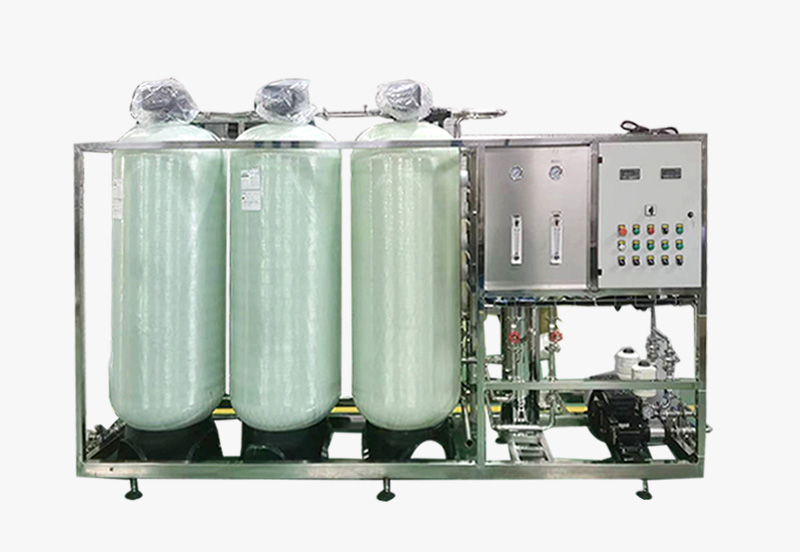
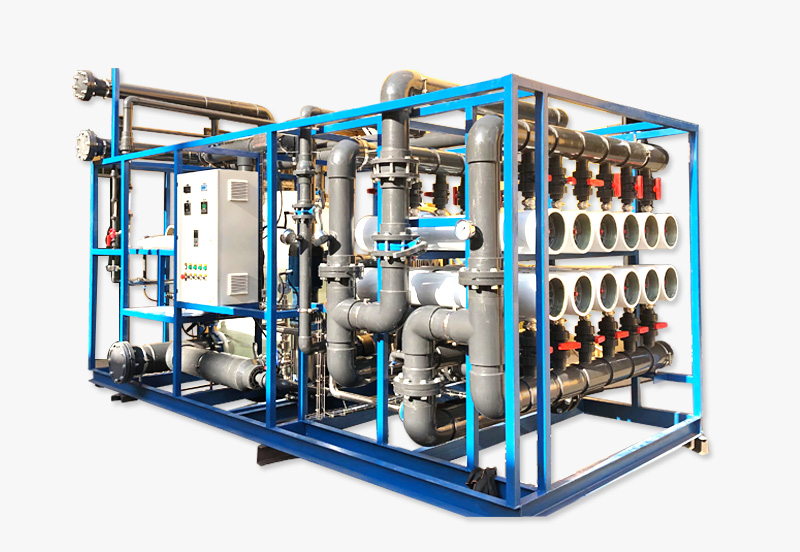
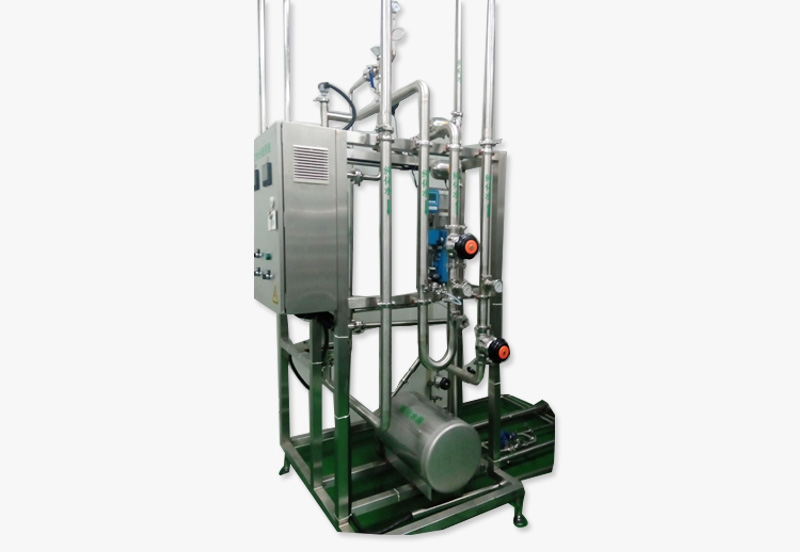
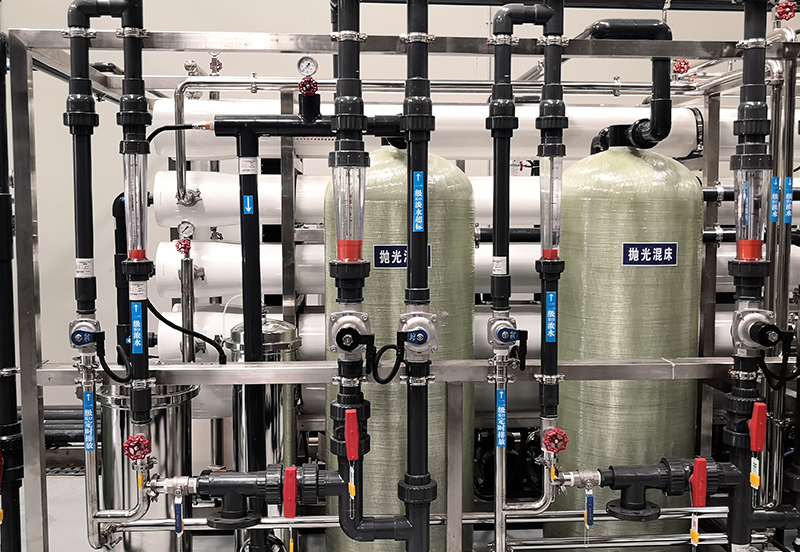
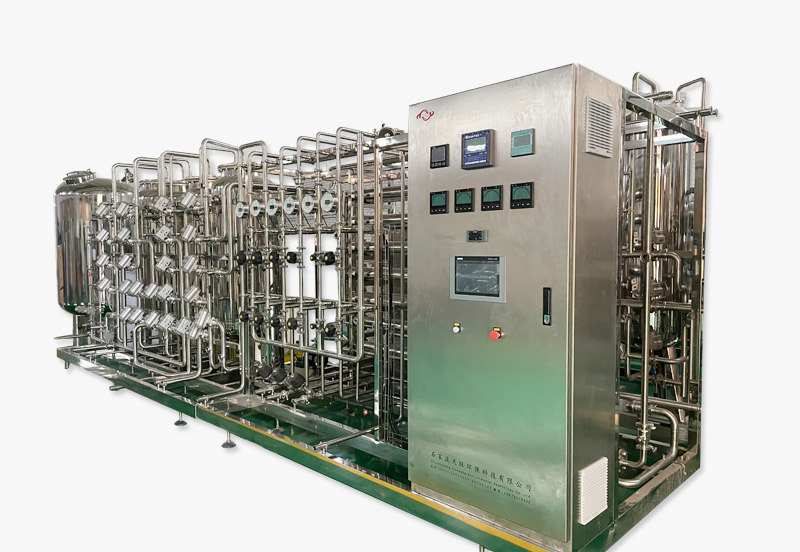
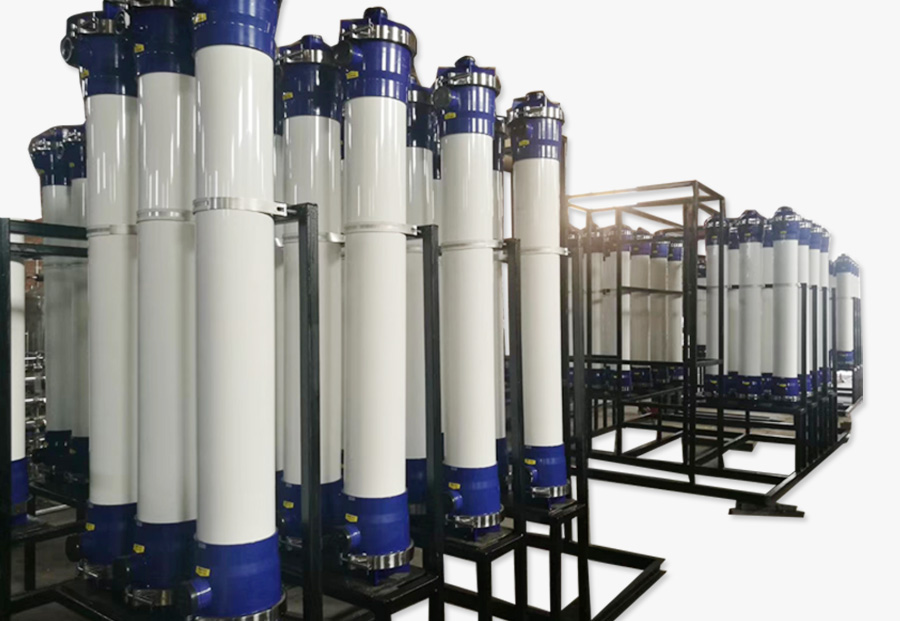

 0311-89272359
0311-89272359


 Message
Message
 Message
Message
